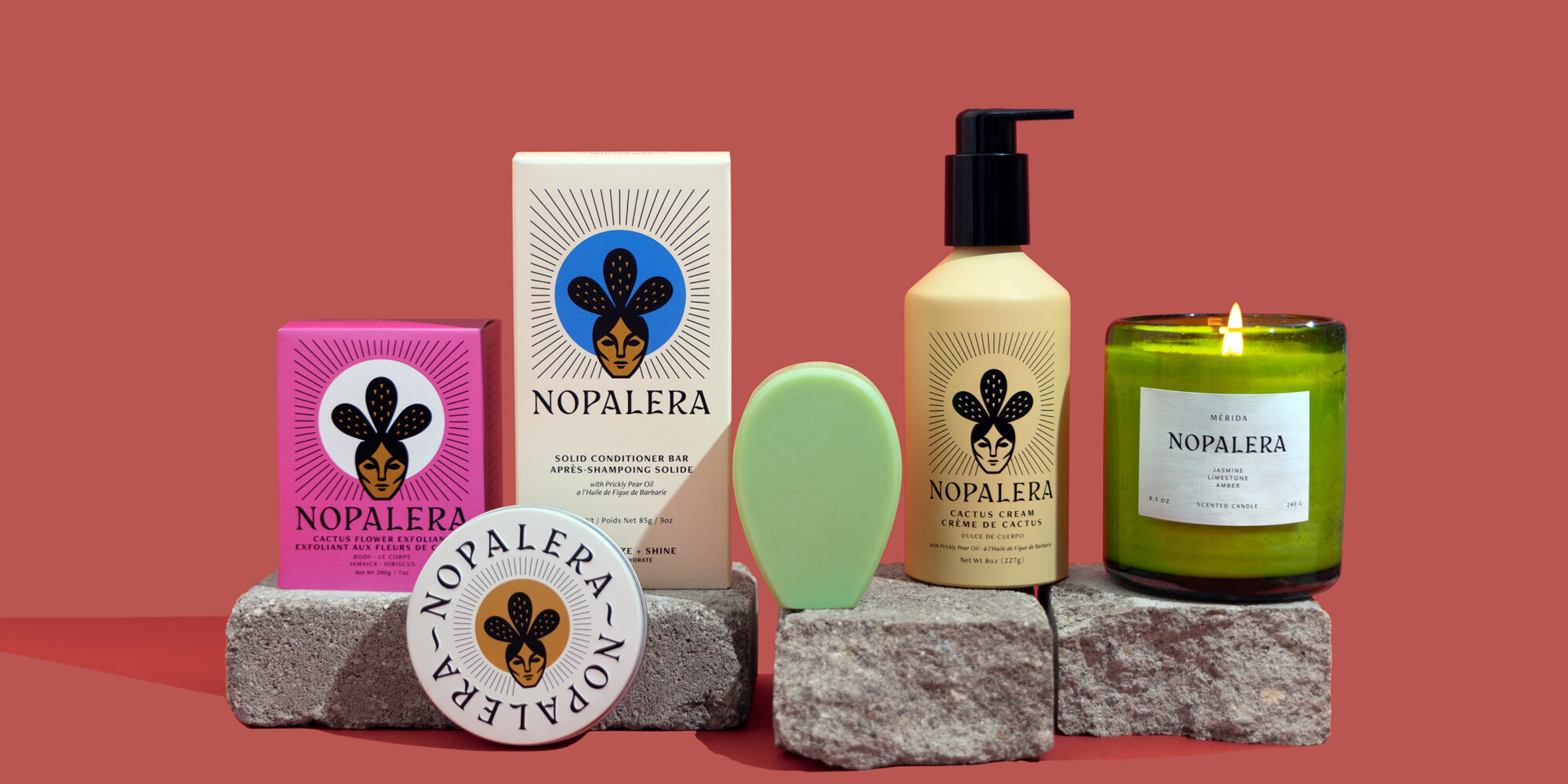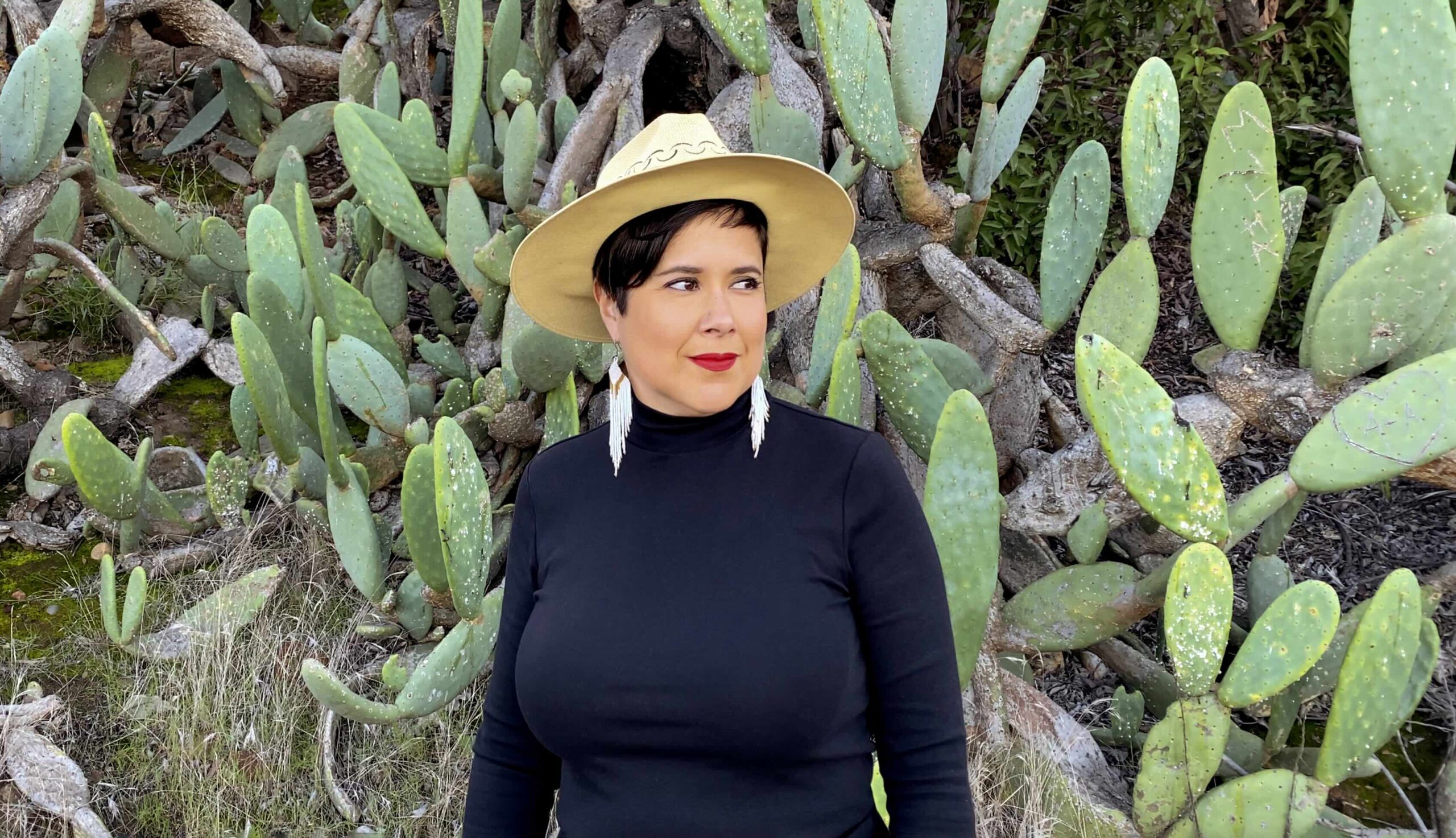
Nopalera Founder Sandra Velasquez On How To Build A Status Lifestyle Brand
When Nopalera extends to haircare next week, it will be another step on its path to building a lifestyle brand.
The Latina-owned premium bath and body care brand is coming out with cactus-shaped solid shampoo and conditioner bars for oily and dry hair priced at $26 each. Along with the solid shampoo and conditioner bars, it’s a releasing a custom silicone holder to store them on a shower or bath wall and travel case to take them on the road. A holder and travel case duo is priced at $28. A shampoo and conditioner bar duo with a free holder and case is priced at $50.
Formerly a sales manager at plastic-free solid haircare brand HiBar and ice cream brand Van Leeuwen, Nopalera founder Sandra Velasquez figures she’s tried almost all the solid shampoo bars on the market. “I’ve tried the fancy ones. I’ve tried the granola ones,” she says. “I saw the opportunity to create a shampoo bar that has incredible lather.”
The solid haircare products join a product roster at Nopalera that includes bar soap, scrub, shower gel, body lotion and a lotion bar priced from $14 to $34. The brand is sold in over 400 retail doors, the majority of which are boutiques, but it has a presence online at Free People and Nordstrom and in stores at Whole Foods and Credo, where the haircare is entering at the end of summer. Retail constitutes 40% of its sales, and direct-to-consumer distribution is responsible for the remainder.
Nopalera is on track to reach $3.1 million in sales this year, up from $2 million last year. Since it started in 2020, the brand, an alum of investment firm True Beauty Ventures and Beauty Independent’s Bridge Mentorship program, has surpassed $3.2 million in sales. Last month, Nopalera concluded a crowdfunding campaign on the platform Wefunder that amassed nearly $640,000. In 2022, it closed a $2.7 million seed round led by L’Attitude Ventures. Now, it’s in the middle of raising $1 million to $1.5 million on a SAFE note.
Velasquez views Nopalera as a lifestyle brand, and she identifies Aesop, L’Occitane and Malin + Goetz as models for it. To Velasquez, a lifestyle brand crosses categories and conveys status. “Aesop is a lifestyle brand. You want people to come into your house and see Aesop on the sink. It’s a statement of identity,” she says. “The fastest way I can communicate Nopalera to people is it’s the Mexican Aesop.”

Lifestyle brands run into issues if they spread themselves thin by jumping into category after category or dive into categories that require them to acquire entirely new groups of customers. Understanding those issues, Velasquez argues Nopalera is proceeding carefully to avoid them.
As the brand enlarges its assortment, she says, “We don’t have to acquire a new customer because that customer is already in the shower.” She continues, “We have a strong brand, and people connect with it emotionally. They will buy anything we make. We launched candles in January, and they sold out right away. People love our scents, our brand and the way things look.”
Below, Velasquez gives fellow founders seven tips on erecting a lifestyle brand based on how she’s steering Nopalera.
1. Ground Product Development In Customer Interest
At first, Velasquez acknowledges she was worried Nopalera venturing into haircare could undermine its focus, but customers kept bringing haircare up in post-purchase surveys on the products the brand should pursue next. The persistence of their interest in haircare convinced her to push Nopalera into the category. And even if haircare is only successful with the brand’s existing community, Velasquez, noting that its email list tops 70,000 people, says it would still be “wildly successful.”
“We live in this TikTok world where everything is so fast. Things go viral, and then all of a sudden retailers want lip stain because it went viral, but trends die. Standing for something is how you win ultimately. It sounds easy, but it’s about making great products that your customers want and staying connected to your customer,” she elaborates. “Make sure you are always building with your core values and customers in mind, not trying to create randomly for whatever investors or retailers think is cool.”
2. Expand With Products That Aren’t The Heaviest Lifts
From an operational standpoint, Velasquez is excited that solid haircare is pretty straightforward. It’s made in New York, where Nopalera is based. The brand doesn’t have to worry about air freight to transport it a long distance, and it doesn’t have extensive componentry that has to be gathered from a multitude of sources.
“It’s a bar in a box,” says Velasquez, adding, “The ideal is to have a high-margin item that you can order in small quantities and replenish quickly. The biggest challenge is inventory and lead time.”

3. Map Out The Ways A Product Can Be Franchised At The Start
Every time Nopalera sets out to develop a product, Velasquez points out a key question the brand asks is, “What are all the ways it can grow?” To grow in the haircare arena, Nopalera is contemplating putting a hair oil and cactus hair mask in its assortment in the future. To heighten its body care profile, body oil and body butter are slated for next year.
Nopalera is preparing to multiply its scents, too, and each product can proliferate in the various scents. A perfume is on deck for the fourth quarter of this year. The color schemes of the brand’s products are crucial. They have to be in sync on shelf to project Nopalera in a coherent, pleasing manner.
4. Tailor Different Product Assortments To Different Retailers
Allowing retailers and other distribution outlets pick and choose from Nopalera’s assortment opens it up to a multitude of places. A boutique, for example, may be happy with the entire collection, while a bigger retailer may want to zero in on the biggest volume drivers.
Velasquez says, “We don’t need every store to bring in our entire assortment. Whole Foods in New York sells our scrub, lotion bar and soap. There is no reason why they would sell our perfume.”
Specialty retailers such as Ulta Beauty and Sephora, which Nopalera is not in, at least not yet, aren’t huge fans of bar soap, but the brand has products they would be fans of, notably its forthcoming perfume. Its distinct aesthetic can be a fit for home goods environments, restaurants, and hotel and airplane amenities.
Velasquez mentions that Nopalera’s assortment also allows it to sell select products on Amazon that it might not have elsewhere. “We live in this world of replenishment, and it’s about convenience. That’s what Amazon is about,” says Velasquez. “For people buying our bar soap, they can get a four-pack on Amazon at a value, but then there are people who come to our website for products they can’t get on Amazon.”

5. Create Product Uniqueness Beyond Performance
In the beauty industry today, efficacy has become an overriding goal. At Nopalera, however, the goal is to make products that are objects of desire, not simply efficacious. “I’m trying to cultivate a feeling so, if people talk about Nopalera, they say they love our stuff because it’s beautiful,” says Velasquez. “Everything we make is with the intention to make it a beautiful object.”
6. Use Launches To Increase Cart Size
Velasquez says, “From a strategy perspective, I’m always thinking, ‘How do I make a product that goes with something else, and when they [customers] run out, are they going to need another one?’”
Currently, Nopalera customers typically purchase three products at a time from the brand. Its average order value (AOV) is about $70. Product bundles help increase cart size and AOV. They make great gifts as well.
7. Consider Opening Stores
Last year, Nopalera had three-month retail pop-up in Los Angeles that presented its lifestyle concept. The store was imbued with Nopalera’s signature copal-inspired scent, and it sold items such as candles and blankets from several Mexican and Mexican American-founded brands. “It was like our own high-end Mexican boutique,” says Velasquez.
While the rent was too pricy for Nopalera to maintain for a prolonged period at this stage in its business, branded retail is a long-term objective, and the brand could dabble in it via partnerships or further pop-ups to slash the price. Velasquez believes that embarking on branded retail too soon could be distracting. She says, “We just do one thing at a time well and go on to the next thing.”





Leave a Reply
You must be logged in to post a comment.